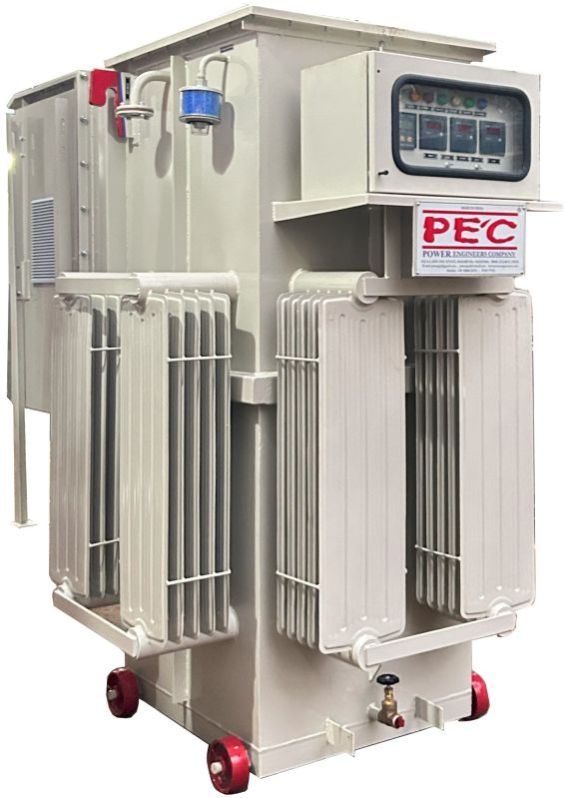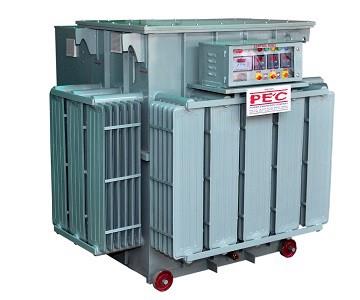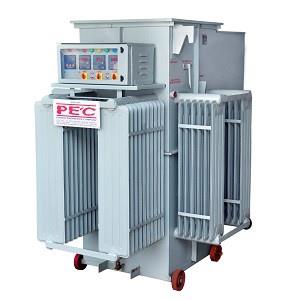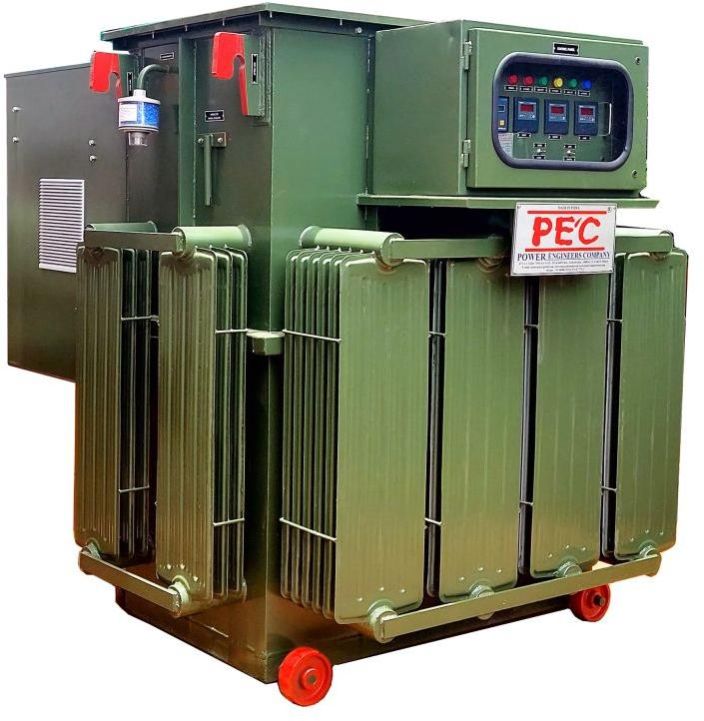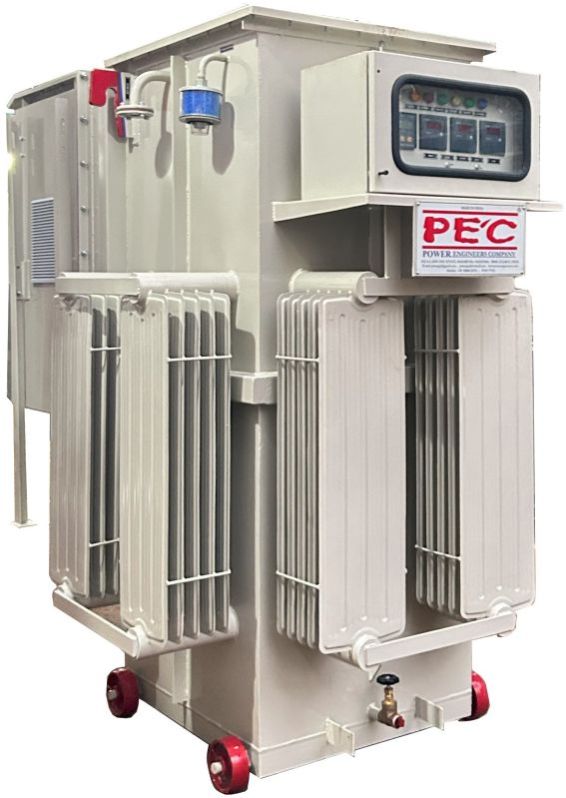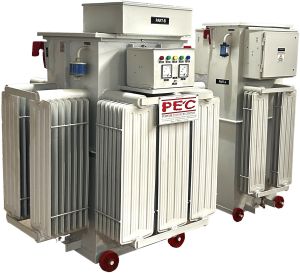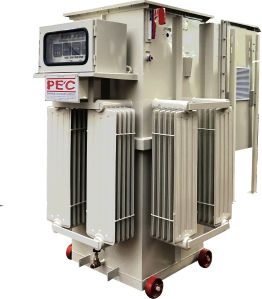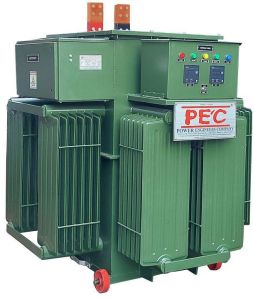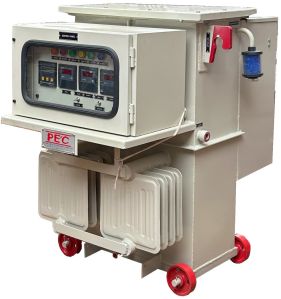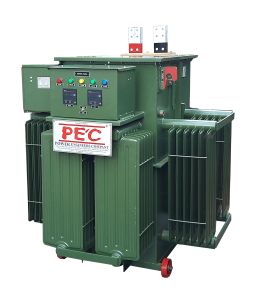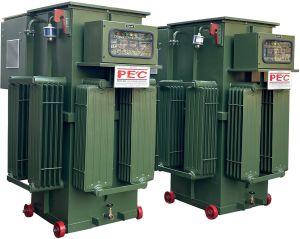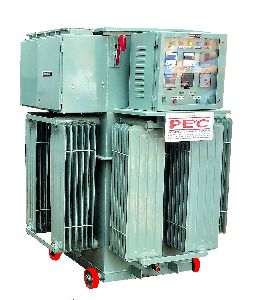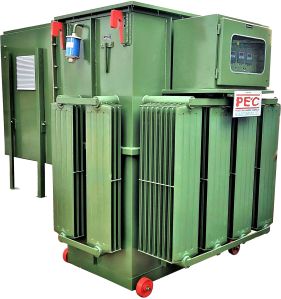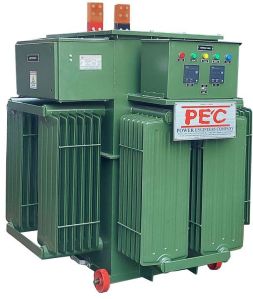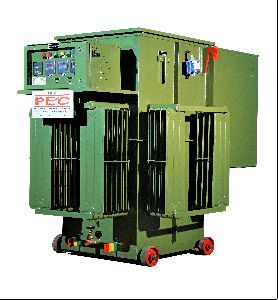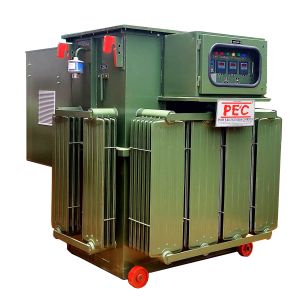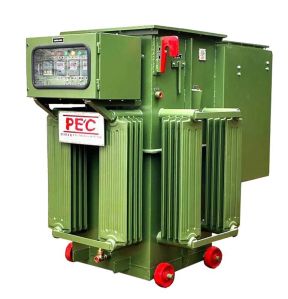- GST No. 24AAKFP0506C1ZU
- Send SMS
- Send Email
| Business Type | Manufacturer, Exporter, Supplier, Retailer, Distributor |
| Warrenty | 5years |
| Country of Origin | 380V, 440V, 360-480 V |
| Cooling System | Oil Cooling |
| Click to view more | |
Product Details
Power Engineers Company is Manufacturer, Exporter & Supplier known for reliability and continuous improvement in the field of rolling contact type automatic voltage controller, automatic voltage stabilizer, electroplating, chemical process rectifiers and special purpose transformers. The systems are designed and supervised by a team of qualified engineers having more than 35 years of experience to achieve best possible quality to total customer's satisfaction. Introduction :In spite of best efforts by the State Electricity Boards, the voltage at consumer ends is never the required voltage. This is because of longer distribution lines and different loading at different time on Distribution Transformers. For example, a consumer near the Distribution station gets high Voltage but the farther most consumers may be getting low Volts.Most of the industries are working in the daytime, so loading on the transformer is more and generally, voltage is low in day time. In the night most of the units are closed and there is practical no domestic load, the voltage may be to the tune of 440-480 Volts.So, practically every industry needs system which may keep the voltage constant. To maintain the voltage stabilizers are available in the market for refrigerators, electrical machines and electronic equipments but these are of very low capacity. We have developed and installed industrial voltage stabilizer throughout India which are suitable for 100% continuous duty cycle supplied up to 5000 KVA which have more than 99. 5% efficiency.PEC have developed LINER TYPE REGULATOR WITH ROLLING CONTACT CARBON ROLLERS and installed up to 5000 KVA capacity. Which are suitable for 100% continuous duty cycle & having more than 99% efficiency. Commitment to provide an UNCONDITIONAL GURANTEE for FIVE YEARS. Industrial units achieve the under noted advantages after installing Automatic Voltage Controller. Reduction in breakdown of electrical equipments upto 60-80%. Energy saving : 5 to 10% on motor load & 15-25% on lighting load. Reduction in MDI : Definite reduction in MDI by 10-15%. Improvement in power factor : In case of high voltage only. Depreciation allowance @ 80% as per Income tax Act Uniform quality of end product. Voltage Optimisation is a term given to the systematic controlled reduction in the voltages received by an energy consumer to reduce energy use, power demand and reactive power demand. While some voltage 'optimisation' devices have a fixed voltage adjustment, others electronically regulate the voltage automatically. Voltage optimisation systems are typically installed in series with the mains electrical supply to a building, allowing all its electrical equipment to benefit from an optimised supply.Over Voltage Various technologies can be used to avoid overvoltage, but it must be done so efficiently so that energy savings resulting from using the correct voltage are not offset by energy wasted within the device used to do so. Reliability is also important, and there are potential problems inherent in running full incoming power through electro-mechanical devices such as automatic voltage controller.Under Voltage refers to voltage lower than the voltage at which equipment is designed to operate most effectively. If the design of the VO does not take into consideration voltage drop over distance to remote power users, then this may lead to premature equipment failure, failure to start up, increased temperature in the case of motor windings and loss of service.Effects On Electrical Loads : A common misconception as far as Voltage Optimisation is concerned is to assume that a reduction in voltage will result in an increase in current and therefore constant power. Whilst this is true for certain fixed-power loads, most sites have a diversity of loads that will benefit to a greater or lesser extent with energy savings aggregating across a site as a whole. The benefit to typical equipment at three phase sites is discussed below.Energy Savings :
Effect of Voltage On Small Motors
|
Operating Characteristic |
Effect of Voltage Change On Small Motor | ||
|
90% voltage |
110% voltage |
120% voltage |
|
|
Starting and maximum running torque |
Decrease 19% |
Increase 21% |
Increase 44% |
|
Synchronous speed |
No change |
No change |
No change |
|
Percent slip |
Increase 23% |
Decrease 17% |
Decrease 30% |
|
Full-load speed |
Decrease 1% |
Increase 1% |
Increase 1% |
|
Starting current |
Decrease 10-12% |
Increase 10-12% |
Increase 25% |
|
Magnetic noise, any load |
Decrease slightly |
Increase slightly |
Noticeable increase |
|
Efficiency |
|
|
|
|
Full load |
Increase 0.5-1% |
Decrease 1—4% |
Decrease 7-10% |
|
3/4 load |
Increase 1—2% |
Decrease 2-5% |
Decrease 6—12% |
|
1/2 load |
Increase 2-4% |
Decrease 4-7% |
Decrease 14-18% |
|
Power factor |
Increase 8-10% |
Decrease 10—15% |
Decrease 10-30% |
|
Full-load current |
Increase 1—5% |
Increase 2-11% |
Increase 15—35% |
|
Temperature rise at full load |
Increase6—12% |
Increase 4 -23% |
Increase 30 - 80% |
Details
The table below compares the behaviour of 60 watt lamp at different voltage :
| Voltage | Current | Watts | Luminous Intensity | LIFE IN HOURS |
| 220 | 0.25 | 54 W | 690 | 2000 |
| 230 | 0.26 | 60 W | 710 | 1000 |
| 240 | 0.27 | 65 W-8.3% More | 820 | 575 |
| 250 | 0.28 | 70.6-17.6% More | 943 | 338 |
| 260 | 0.29 | 75.4-25.6% More | 1073 | 200 |
| 270 | 0.31 | 83.4-39% More | 1213 | 100 |

